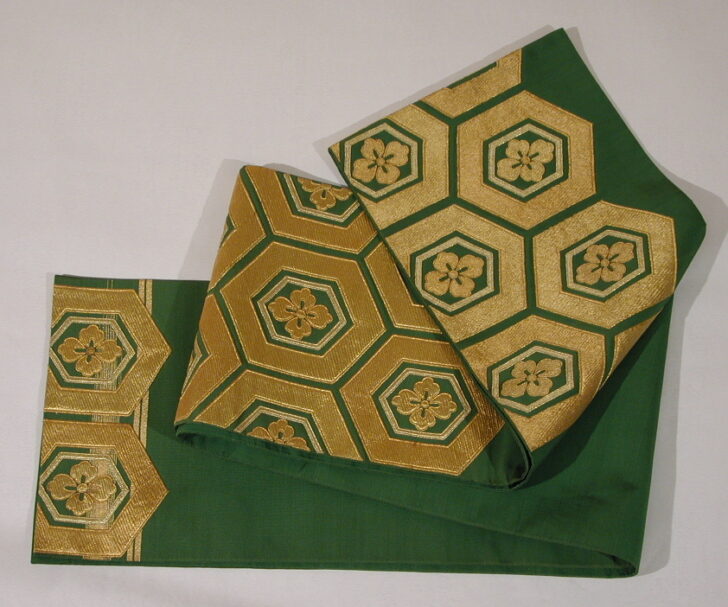Obi
Japanese

Description
These gorgeous obi, all made of brocade, were intended to be worn with and complement formal kimono for festive events such as weddings and New Year’s gatherings. Some are designed with motifs, shapes, and colors that have auspicious meaning. For example, the green obi with the gold hexagonal shapes refers to eternity (evergreen) and longevity (the hexagon is a traditional symbol of a tortoise shell). Others have classic motifs, such as the off-white obi with drums and ox carts based on the Tale of Genji, an eleventh-century novella.
These obi were made in the Nishijin area of the city of Kyoto, which has dominated the production of high-quality woven textiles since the fifteenth century. The weaving industry flourished there under the protection and encouragement of the flamboyant military rulers of the Azuchi-Momoyama period (1568–1615), Oda Nobunaga (1534–1582) and Toyotomi Hideyoshi (1536–1598). The production of Nishijin textiles is very complex, and specialized in five main areas—designing and creating patterns, producing silk threads, producing tools (including weaving machines), weaving, and final sewing—each accomplished in a different workshop. ; Obi
Japan, Showa period (1926–1989)
1960s–70s
Silk with gold embroidered design
Gift of Howard and Patricia Yamaguchi, 2005/1.342
Subject Matter:
Fukuro obi with embroidery in turtoise-shell with flower design.
Physical Description:
Dark green plain weave silk with embroidered hexagonal design in couched greenish-gold and yellow-gold wrapped threads
Usage Rights:
If you are interested in using an image for a publication, please visit https://umma.umich.edu/request-image/ for more information and to fill out the online Image Rights and Reproductions Request Form.